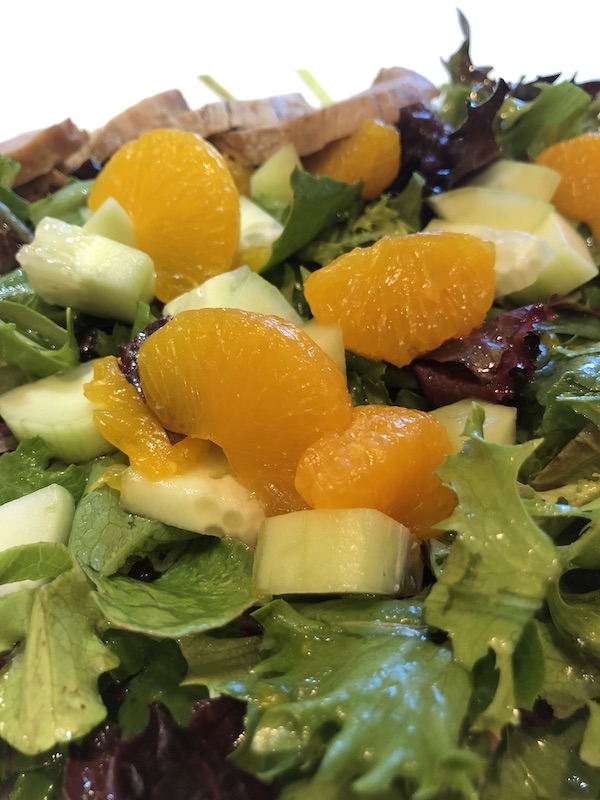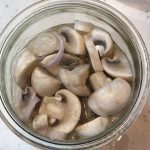Last chance to learn more about Cooking to Flourish: Meals Your Food Sensitive Family Enjoys until fall. To learn more, click here.
To schedule a free 15 minute “What is Your Biggest Cooking Challenge” session with Cindy, click here.

Here is the transcript of the episode:
Welcome to The Sensitive Kitchen. Where home cooks are inspired to Cook to Enable Those You Love to Flourish.
I’m Cindy Sullivan, registered dietitian, passionate nutrition, educator, and accomplished home cook. Whether you’re changing, how you cook for food sensitivities, allergies, intolerances, or just trying to eat healthier on a budget, you’re in the right place.
Most episodes, I will share favorite recipes as well as modification tips, and nutrition benefits. Occasionally I’ll have a guest or special episode like modifying holiday favorites.
My favorite foods? They’re raspberries and homemade chocolate chip cookies. My latest cooking project was long fermented sourdough bread.
Avocados are in season somewhere. They’re on sale in my grocery store and they have been for a couple of weeks.
Quick – it’s time to pull out all the avocado recipes: guacamole, white chicken, chili tacos and salads, tuna and avocado boats, vegetable salads with avocado. We often do cucumber, tomato, avocado, and a flavored vinegar, and two salads with a sweet red wine vinegar dressing that I want to talk about today.
But before we talk about food, I am so excited to announce the very first class Food Sensitivity Kitchen is offering.
It’s for you if you’re cooking for multiple food sensitivities and are looking for ways to make cooking dinner easier or taste better. If this sounds interesting, I would love to talk to you about Cooking To Flourish: Meals Your Food Sensitive Family Enjoys. Go to foodsensitivitykitchen.com/schedule to schedule a free 15 minute consultation with me, Cindy, this week, January, 2021.
Okay, let’s talk about these two salads.
The sweet red wine vinegar dressing has a hint of orange flavor. It’s a staple salad dressing in our household, a little sweet, a little tangy with a hint of orange flavor. It keeps well, but it does separate. So shake it just before pouring it on your salad.
I have two salads to recommend with this dressing. Both have avocados and canned Mandarin oranges, although feel free to substitute fresh. I always keep a can of Mandarin oranges in the cupboard for this salad. I make it almost year round, at least when the avocados don’t cost me an arm and a leg.
In the first salad, you’re going to mix this dressing with spinach or romaine, avocados, seeded cucumbers and Mandarin oranges.
In the second salad, I use a mixed baby green mix for the lettuce, avocado, pomegranate arils, Mandarin, oranges, and pecans or almonds. The orange flavor in the dressing is subtle, but it’s enhanced by the Mandarin oranges.
Let’s talk a little bit about the nutrients in these salads. Darker colored lettuce contains more nutrients, both vitamins and minerals and other antioxidants and phytochemicals. Phytochemicals are simply naturally occurring plant chemicals that have biological activity in your body.
For example, red colored lettuces have more anthocyanins and quercetin both of which are powerful antioxidants protecting your body from free radical damage. Free radical damage can lead to anything from cancer to wrinkles. I suggest you eat a variety of lettuces either at the same time, like a mixed baby lettuce, or eat a variety over time. Spinach one week, red leaf lettuce the next and then romaine the next.
Why? Several reasons. First, lettuces are not all the same in terms of nutrient content. Spinach and romaine shine in terms of the B vitamin folate. Spinach, Swiss chard, watercress and kale are really stars in terms of how much vitamin K they contain. Romaine is an amazing source of vitamin a in the form of beta carotene, but spinach Swiss, chard, watercress and kale are excellent sources as well.
Secondly, some greens contain oxalates and other compounds, which could interfere with nutrient absorption. Spinach and Swiss shard are high in oxalates, which prevents the calcium and iron in these two greens from being well absorbed. The good news is that it does not apply to the calcium from other sources like dairy products that are eaten at the same time. So don’t make a steady diet of only spinach, alternate your lettuces.
Green leafy vegetables are good sources of vitamin K, which helps with both blood clotting and bone mineralization. Some evidence also suggests that vitamin K may decrease your risk of cardiovascular disease, especially plaques in your arteries. Besides the leafy greens in these salads, the avocados supply fiber, healthy fat, and a delicious creaminess.
Canned Mandarins supply a bright appealing flavor, as well as some vitamin A and C. Remember, vitamin C is susceptible to heat, and this is a canned product. So it’s not as high as fresh mandarins. Cucumbers supply crunch, water, and they’re very low in calories.
The second salad adds, pomegranate arils, which are the edible seeds of the pomegranates and the juicy red sacks that surround them, and nuts instead of the cucumber. According to Web MD pomegranates have about three times the antioxidants of green tea or red wine. Pomegranates are rich in these antioxidants and flavonoids, both of which are known to prevent free radicals from damaging your cells.
In this salad, pecans are high in unsaturated fat and antioxidants from the brown skin on the pecans. And if you want to maximize your antioxidants on the almonds choose the ones that are not blanched, that have that brown skin on them.
Let’s talk a bit about preparation for the salad dressing recipe. Actually for all the recipes, see foodsensitivitykitchen.com/014, because this is episode 14 of the sensitive kitchen podcast. In addition, I’ve listed the salad ingredients. Now realize, any tossed salad, the amounts are in approximate, right?
I had to supply the program that I use for nutrient analysis with how much lettuce, how much spinach as well as to give you an idea, but make the amount that your family will eat in one meal. I usually, I don’t measure my greens and I usually use half a cucumber and half an avocado for my family, but there’s almost always dressing leftover. So the calories and fat and the nutrients that are provided are higher if you don’t use all the dressing, meaning the nutrient analysis includes all of the dressing.
This dressing comes together quickly, and I almost always double it and store the extra in the refrigerator. First, you’re going to simply rinse your lemon and squeeze about a tablespoon of juice into a bowl or measuring container. Add the red wine vinegar. And let me say a couple things about this red wine vinegar.
I use the Pompeiian brand, the red wine vinegar. It makes a huge difference in how this dressing tastes. This Pompeiian is hands down my favorite, but if for some reason you can’t use red wine vinegar then apple cider vinegar is a really good substitute in this recipe. Add the salt and the sugar and stir them until they dissolve.
If you’re using a salad dressing cruet, you don’t need to measure your oil, just add as much oil as the other ingredients combined. Shake or whisk until combined. And as I mentioned earlier, this dressing will need to be shaken or whisked right before adding to the lettuce because it separates quickly.
If you’re making the version of this dressing, excuse me, the salad with pomegranates and you’ve purchased a whole pomegranate. I would tackle that next. It does take a few minutes to separate the arils from the encasing peel, but it’s well worth your time. There are several methods for doing this. And let me tell you mine. First of all, take off any clothing with white or light colored sleeves and cover your clothes with an apron. Sometimes the pomegranate juice spurts, and it does stain.
Rinse your pomegranate and cut off the stem end or the flower end, then score the pomegranate into quarters. You’re aiming to cut through the skin, but not into the juicy arils. Now the trickiest part: you want to use the scored peel to pry apart the pomegranate. You may need to insert your knife inside where you scored it a little bit to nudge it apart but I try to do most of it with my fingers.
Once I have a chunk broken off, I remove the whitish membranes and then I start gently breaking the arils into a small waiting bowl. If there are any brownish or wrinkled ones around the edges of the pomegranate, just discard them. If you don’t want to separate all the arils at once, just place the remaining pomegranate in a plastic bag and store it in the refrigerator, or you can do it all at one time and store the leftover arils in the refrigerator. Okay?
Continuing on with the salad, the hardest part is done. Wash and dry your salad greens if you need to do that and tear your spinach or your lettuce, whatever salad greens you’re using into bite sized pieces. Peel the cucumber if desired, depending on the type of cucumber you have, and cut it length-wise into quarters. You’re going to remove the seeds of the cucumbers if they’re large, or if you want to. Cut the cucumber into about half an inch chunks.
Open and drain the Mandarin oranges, rinse and cut in half the avocado. Peel the half of the avocado that doesn’t have the pit in it, that way if you need to store it, store the half with the pit and the peel still on it, it will prevent browning. Put it in a plastic bag or some other airtight storage container and throw it in your fridge.
If you’re using the whole thing, peel the whole thing, cut it into approximately half an inch cubes just before serving. If you have to cut the avocado ahead of time, drizzle with a little bit of the dressing and mix it and it will help keep the avocado from turning brown.
Dress the greens with the dressing. And as I mentioned before, I usually have some dressing leftover. Add the cucumbers, and I usually put the Mandarin oranges and the avocado on the table in a bowl and let everyone at the table put their own Mandarin oranges and avocado on the salad.
You can do it either way, but I will warn you that cucumbers and the Mandarin oranges end up at the bottom of the bowl, if you put them in the whole salad. Sometimes I add poached chicken or roast pork tenderloin for a complete meal to the salad. And sometimes it’s a side salad with dinner. I hope you enjoy this recipe.
Let me know what you think. And remember, this is the very last week that Cooking to Flourish, my new class, is open until fall. Cooking to Flourish is an intimate cooking lab in your own kitchen. It’ll enable you to put delicious dinners on the table that your family enjoys, that they feel good after eating and ensure you don’t spend all day in the kitchen.
This is a beta launch offered for a special price. So for more information, go to foodsensitivitykitchen.com/schedule or email me at [email protected]. Thanks so much for listening For the recipe, go to foodsensitivitykitchen.com/014 for the transcript and a link to the recipe with pictures.
Keep Cooking to Enable Those You love to Flourish and keep serving those vegetables! Have a great day. Bye-bye.




